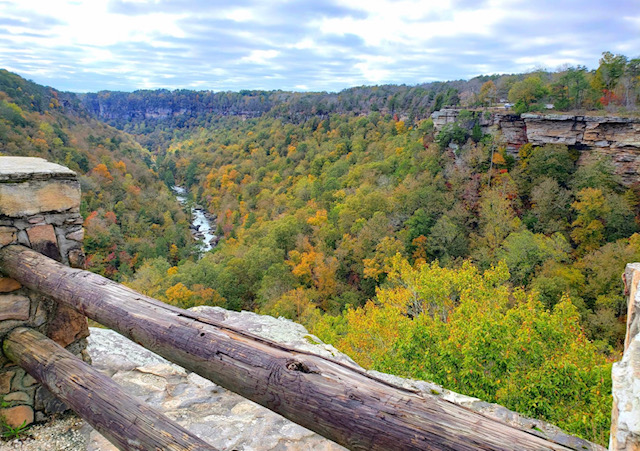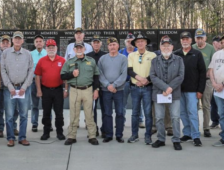By Marla Ballard
Reporter
DEKALB COUNTY - Tourists and locals alike enjoy the beauty of the 11-mile-long, 600-foot-deep canyon known as Little River Canyon. The 22-mile drive along the rim is impressive. Visitors admire the Little River Falls as it cascades over a 45-foot drop. The canyon offers varied recreational opportunities, from hiking and biking to kayaking and fishing.
The canyon is also a sanctuary for flora and fauna which include rare and endangered species such as the bald eagle, the green salamander, and the mountain laurel. The river is said to be among the cleanest and wildest waterways in the South, undammed aside from a small deserted hydroelectric project at DeSoto Falls on the West Fork near Mentone.
However, in addition to enjoying the scenic value consideration to the footsteps that are being traced sheds new light on the surroundings. The canyon has been the home to Native Americans, Civil War soldiers, and railroad builders, all of which left behind traces of their history and culture. When standing on the rim of the canyon many visitors are unaware of the steps they are tracing.
Little River falls resides on the line that divides Fort Payne from Gaylesville. In 1864, after General W.T. Sherman claimed Atlanta, he fought with Hood’s forces across Little River. Sherman eventually arrived in Gaylesville on October 21, 1864, and reported he had about 60,000 men in the Little River-Gaylesville area. Sherman’s force withdrew from the Little River area on October 29, 1864. It was here that Sherman finalized his plans for a march through Georgia.
In 1890 Colonel Woolsey Finnell, in charge of a surveying party laying out the railroad through Shinbone Valley, visited the Little River Canyon and remarked, “Why go to Colorado to see the Royal Gorge? Little River Gorge is far more scenic.”
Railroad spur lines connected Lookout Mountain ore mines to valley furnaces. The railroad was eventually known as the Tennessee, Alabama, and Georgia Rail Line (TAG Rail Lines). Colonel Finnell ran the railroad about a mile from the southern end of the canyon. The scenic route ran the length of Lookout Mountain from Chattanooga to Gadsden.
The line went bankrupt and was reorganized in 1895 and again in 1902. Sometime between 1930 and 1951, the TAG Rail Line discontinued passenger service. In 1971, the line was purchased by the Southern Railway System and segments were abandoned in the 1980s.
Whenever visiting an area take the time to look up the history of the area. Print it whenever possible and carry it along on the trip and relive and track the steps of those who went beforehand. Seeing whose steps are being traced gives new meaning to the path being taken.
For information on the Native Americans that lived along the canyon go online to Trail of Tears, Little River Canyon National Preserve.





